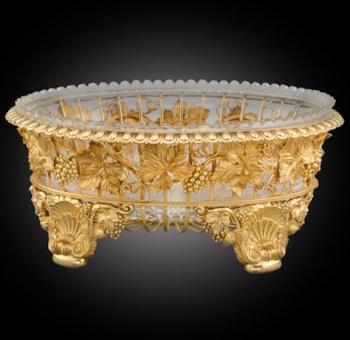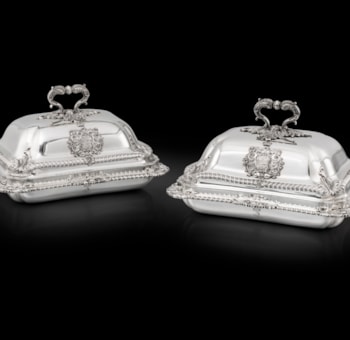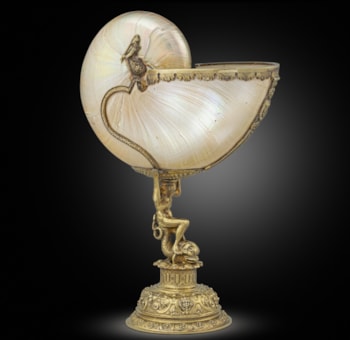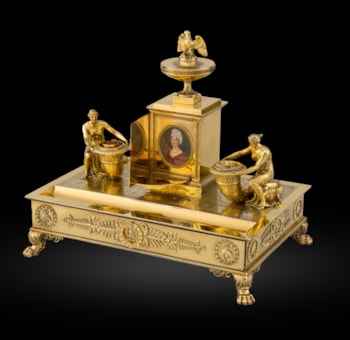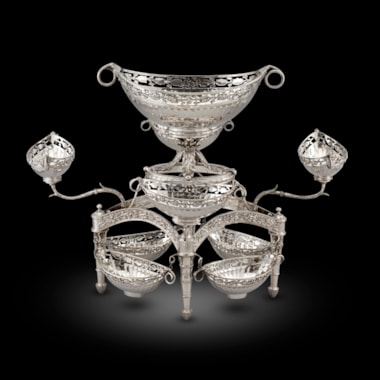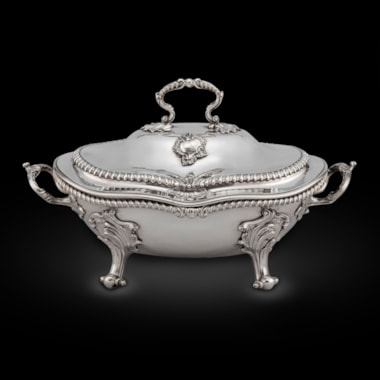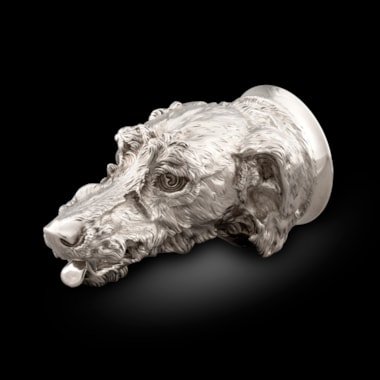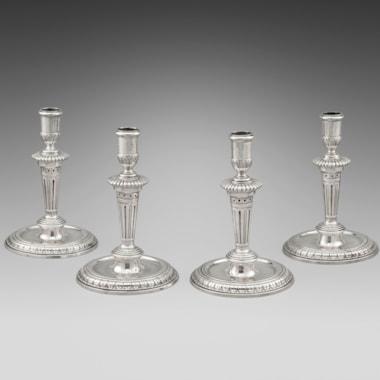Henrique Teixeira de Sampaio
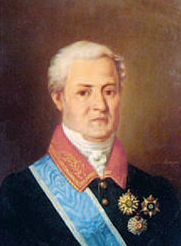
Henrique Teixeira De Sampaio, Barao De Teixeira and 1st Conde De Póvoa (1774-1833)
Sampaio was born in the town of Angra on the island of Terceira in the Portuguese administered Azores. He was the son of Francisco José Teixeira de Sampaio and his second wife Eulália Floriana Gualberta de Melo Carvão, his father being a successful businessman and his mother connected to some of the greatest families of the region. He was born in the family home and was christened on 16 November 1774, with Henrique José de Carvalho e Melo, Conde de Oeiras acting as his Godfather. His father already had established trade links with England, supplying the Portuguese army with food, and so it was not surprising that the young Sampaio was sent there to study. While in London he began his own business career, following in his father’s footsteps, being appointed in 1807 as Commissioner of Army Supplies for the Anglo-Portuguese forces who were seeking to prevent Napoleon’s invasion of Portugal.This position, as well as the exclusive contract for the supply of tobacco, allowed him to establish a huge fortune very quickly, to the extent that he was said to be amongst the richest men in Portugal, worth some 21,000,000 cruzados on his death in 1833. With this wealth, and the loans he made to the State, came social and political prominence, particularly in his influence on Portuguese fiscal policy. His position and importance to Portuguese society was commemorated on 22 May 1816 when the title 1st Lord de Sampaio was conferred upon him by King João VI in Rio de Janeiro. Soon after, on 6 March 1819, he was made, by Royal Charter, 1st Barao de Teixeira and was granted the right to bear arms. While his business interests continued to thrive in the 1820s, making Sampaio’s trading house the largest in Portugal and a rival to other firms in London and Hamburg, the finances of the Portuguese state were in a perilous condition. The further loans Sampaio made to the state resulted in him becoming the biggest creditor to the Treasury, and so when the Bank of Lisbon was founded in 1822, he became the biggest shareholder with some 400 shares, compared to only 100 shares owned by the next largest shareholder. In honour of this he was created 1st Conde de Póvoa on 3 July 1823, named after his estate in Póvoa de Santo Adrião, near Lisbon.Sampaio married twice, first in February 1802 to Marianne Slack, the daughter of an ex-patriot Irish merchant who was living in Lisbon. She died, along with her child, in childbirth in October 1804 and Sampaio was to remain childless and unmarried until March 1824 when he was married to his second wife Louisa Maria José Rita Baltazar de Noronha, who was only 21 and already expecting a child at the time of the marriage. In order to protect his assets for his child he arranged for a trust to be set up by Royal decree. Unfortunately, the first child, born some five months after their marriage, died soon after birth. It was not until 1826 that the couple had a son called João Maria de Noronha Sampaio and a daughter named Marie Louise de Noronha Sampaio the next year.Henrique Teixeira de Sampaio died at his home of Rua da Escola Politécnica, in Lisbon, on 27 March 1833, aged 59 years. His son João Maria de Noronha become 2nd Conde de Póvoa and inherited the family fortune, aged only 6. The 2nd Conde died soon after, in 1837 at which time the titles became extinct and the fortune passed to his sister Marie Louise de Noronha Sampaio who went on to marry, against the wishes of her mother, Domingos António Pedro de Sousa Holstein, the future 2nd Duke of Palmela.
The Sampaio Dinner-Service by Paul Storr, History and Provenance:
The Conde de Póvoa was a significant patron of Paul Storr in the 1820s, reflecting not only his ties with England, but also the strong political and trade ties between England and Portugal in the 19th century. The service, which must feature as one of the great services that Storr produced following his departure from Rundell, Bridge and Rundell in 1819, at which time he established a shop in New Bond Street with John Mortimer. The service descended at Casa Palmela, Lisbon, the family home of the Dukes of Palmela, until April 1976 when a significant portion of the major pieces were sold by Christie’s at auction in Geneva. All pieces marked for Paul Storr from the Sampaio service, dated either 1822 or 1823. Divided into 8 lots the service weighed just under 6,000 ounces, giving some idea of the outstanding quality of the pieces.
The 1976 Sale:
Lot 192.
A table garniture consisting of an eight-light candelabrum, this pair of four-light candelabra-centrepieces & a plateau. This pair of four-light candelabra-centrepieces subsequently sold Sotheby’s, New York, 28 October 1988, lot 218
The eight-light candelabrum is now in the collection of the Preservation Society of Newport County.
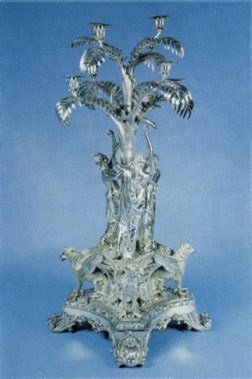
Lot 193.
A pair of four-light candelabra subsequently sold Christie’s, New York, 19 April 2002, lot 348
Lot 194.
A set of four three-light candelabra subsequently sold Christie’s, New York, 19 April 2002, lot 348.
LOT 195.
A pair of Warwick Vases

Lot 196.
A pair of soup tureens and stands subsequently sold Sotheby’s, New York, 28 October 1988, lot 219.
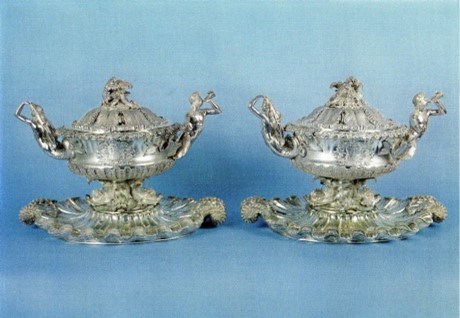
Lot 197.
A further pair of soup-tureens subsequently sold Christie’s, New York, 20 October 1999, lot 206.
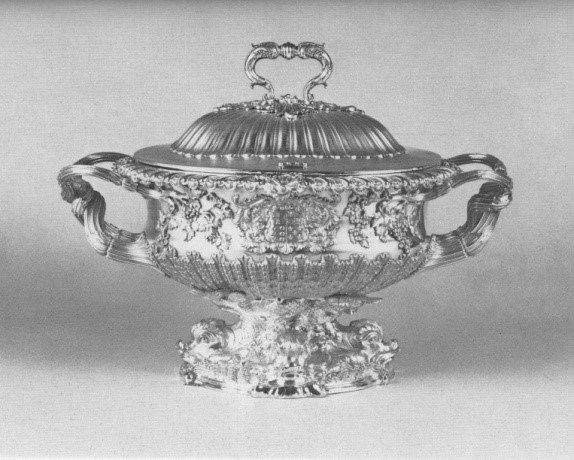
Lot 198.
A set of four wine coolers
Lot 199.
A further pair of wine coolers

Lot 200.
A set of eight salt-cellars subsequently exhibited Christie’s, London, The Glory of the Goldsmith, Magnificent Gold and Silver from the Al-Tajir Collection, no. 151.
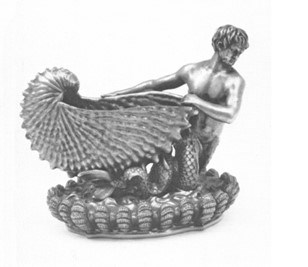
Son of Thomas Storr of Westminster, first silver-chaser later innkeeper, born 1771. Apprenticed c'1785. Before his first partnership with William Frisbee in 1792 he worked at Church Street, Soho, which was the address of Andrew Fogelberg. This is also the address at which Storr's first separate mark is also entered. First mark entered as plateworker, in partnership with William Frisbee, 2 May 1792. Address: 5 Cock Lane, Snow Hill. Second mark alone, 12 January 1793. Address: 30 Church Street, Soho. Third mark, 27 April 1793. Fourth 8 August 1794. Moved to 20 Air Street, 8 October 1796, (where Thomas Pitts had worked till 1793). Fifth mark, 29 November 1799. Sixth, 21 August 1807. Address 53 Dean Street, Soho. Seventh, 10 February 1808. Ninth, 21 October 1813. Tenth, 12 September 1817. Moved to Harrison Street, Gray's Inn Road, 4 March 1819, after severing his connection with Rundell, Bridge and Rundell. Eleventh mark, 2 September 1883. Address: 17 Harrison Street. Twelfth and last mark, 2 September 1833. Heal records him in partnership with Frisbee and alone at Cock Lane in 1792, and at the other addresses and dates above, except Harrison Street. Storr married in 1801, Elizabeth Susanna Beyer of the Saxon family of piano and organ builders of Compton Street, by whom he had ten children. He retired in 1838, to live in Hill House in Tooting. He died 18 March 1844 and is buried in Tooting Churchyard. His will, proved 3 April 1844, shows an estate of £3000. A memorial to him in Otely Church, Suffolk was put up by his son Francis the then incumbent of the parish. For full details of Storr's relationship with Rundell, Bridge and Rundell please see N.M. Penzer, 1954 or Royal Goldsmiths, The Art of Rundell and Bridge, 2005.
Storr's reputation rests on his mastery of the grandoise neo-Classical style developed in the Regency period. His early pieces up to about 1800 show restrained taste, although by 1797 he had produced the remarkable gold font for the Duke of Portland. Here, however the modelling of the classical figures must presumably have been the work of a professional sculptor, as yet unidentified, and many of the pieces produced by him for Rundell and Bridge in the Royal Collection must have sprung from designs commissioned by that firm rather than from his own invention. On the other hand, they still existed in his Harrison Street workshop, until destroyed in World War II, a group of Piranesi engravings of classical vases and monuments bearing his signature, presumably used as source material for designs. The massiveness of the best of his compositions is well shown in the fine urn of 1800 at Woborn Abbey, but the Theocritus Cup in the Royal Collection must be essentially ascribed to the restraint of its designer John Flaxman, while not denying to Storr its superb execution. Lord Spencer's ice pails of 1817 show similar quality. Not all Storr's work however was of classical inspiration. The candelabra of 1807 at Woburn derive from candlesticks by Paul Crespin of the George II period, formerly part of the Bedford Collection, and he attempted essays in floral rococo design from time to time, which tend to over-floridity. On occasions the excellence of his technical qualities was marred by a lack of good proportions, as in the chalices of the church plate of St Pancras, 1821. In spite of these small lapses there is no doubt that Storr rose to the demands made upon him as the author of more fine display plate than any other English goldsmith, including Paul De Lamerie, was ever called upon to produce.
You May Also Like







